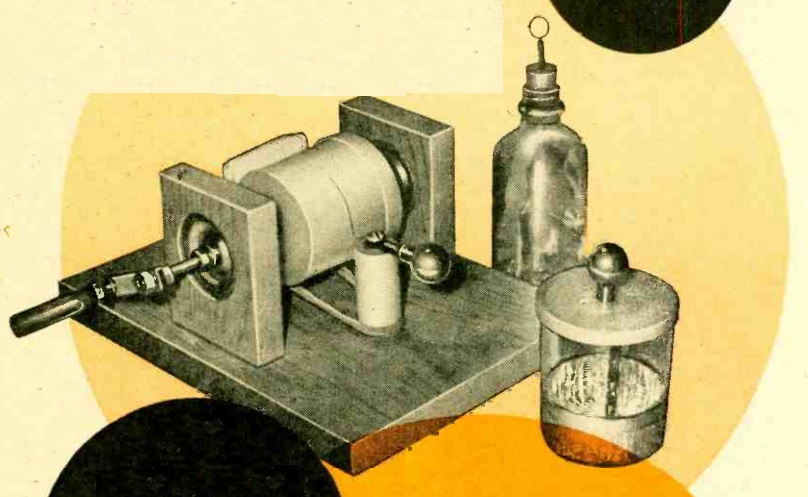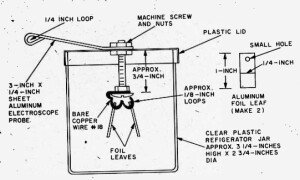 Fifty years ago this month, the June-July 1970 issue of Science and Electronics showed how to put together this electrostatic generator, as well as the accompanying Leyden jar and electroscope.
Fifty years ago this month, the June-July 1970 issue of Science and Electronics showed how to put together this electrostatic generator, as well as the accompanying Leyden jar and electroscope.
It consisted of a plastic jar which was turned by the crank to rub against a piece of wool. A pickup wire collected the charges and conducted them to the metal ball. This could be used to charge the Leyden jar. For bearings, the device used roller skate wheels.
 Emergency preparedness buffs will notice that the electroscope, at left, looks very similar to the venerable Kearney Fallout Meter (KFM) used for detecting nuclear radiation. Indeed, they do rely on the same principle. In the presence of ionizing radiation, the charge will slowly dissipate, allowing the leaves to get closer together. This electroscope is not calibrated. Therefore, it would not be able to provide an accurate radiation dose reading. However, this generator would be useful to charge the KFM.
Emergency preparedness buffs will notice that the electroscope, at left, looks very similar to the venerable Kearney Fallout Meter (KFM) used for detecting nuclear radiation. Indeed, they do rely on the same principle. In the presence of ionizing radiation, the charge will slowly dissipate, allowing the leaves to get closer together. This electroscope is not calibrated. Therefore, it would not be able to provide an accurate radiation dose reading. However, this generator would be useful to charge the KFM.
For young scientists without any ionizing radiation at their disposal, the magazine describes a number of interesting experiments, any one of which would be sure to bring home the blue ribbon at the next science fair. To guarantee the top prize, one interesting experiment would be to purchase a small uranium sample. Charge up the electroscope and see how long it takes to discharge. Then, repeat the experiment with the uranium inside the electroscope and see how much faster it discharges.
